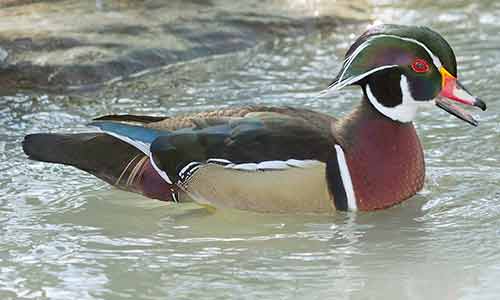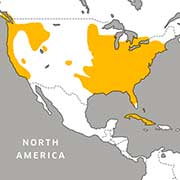Appearance:
Male wood ducks are easily identified by their deep green crown feathers, red bill, and red eyes. In contrast, females are covered in light brown feathers with dark blue feathers on their wings and a yellow ring around their eyes.
Diet:
The diet of wood ducks consists mostly of seeds like acorns and also includes aquatic plants and an occasional insect or crustacean.
Mating and Reproduction:
Wood ducks make nests in the cavities of tall trees and line the nest with down feathers as padding for their eggs. Hatchlings leave the nest for the first time the very morning after hatching, leaping from high up in their nest onto the forest floor. They are cared for by their mother for about six weeks after hatching.
Habitat/Range:
Habitat: Swamps, ponds, wooded areas with rivers
Range: As a migratory species, the wood duck breeds in northern United States and Canada, then travels to southern United States and Mexico during the cold winter months.




